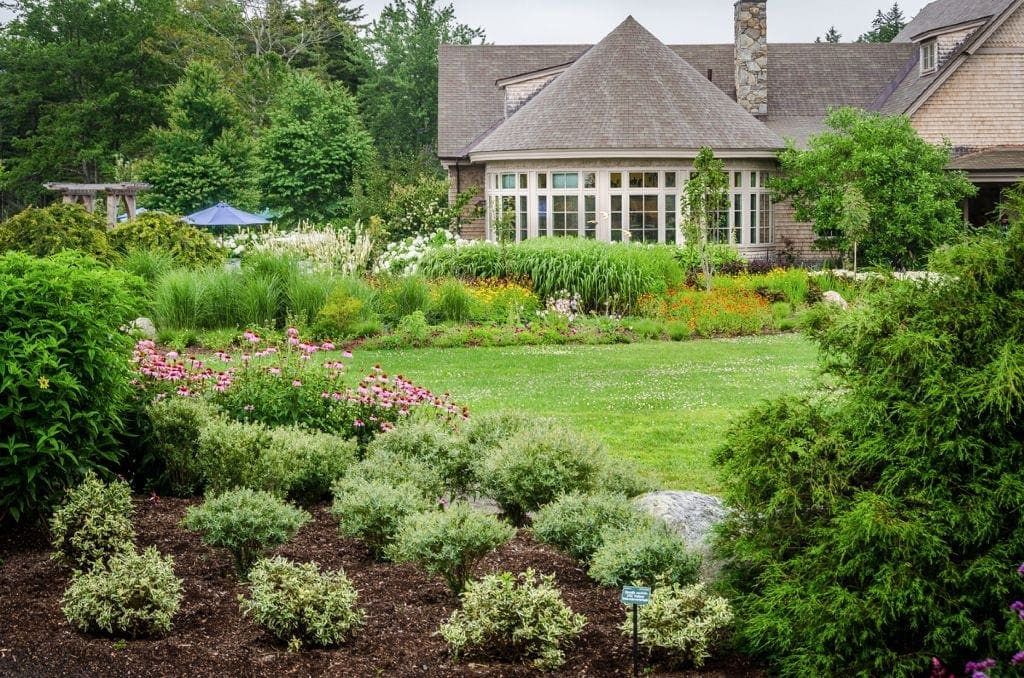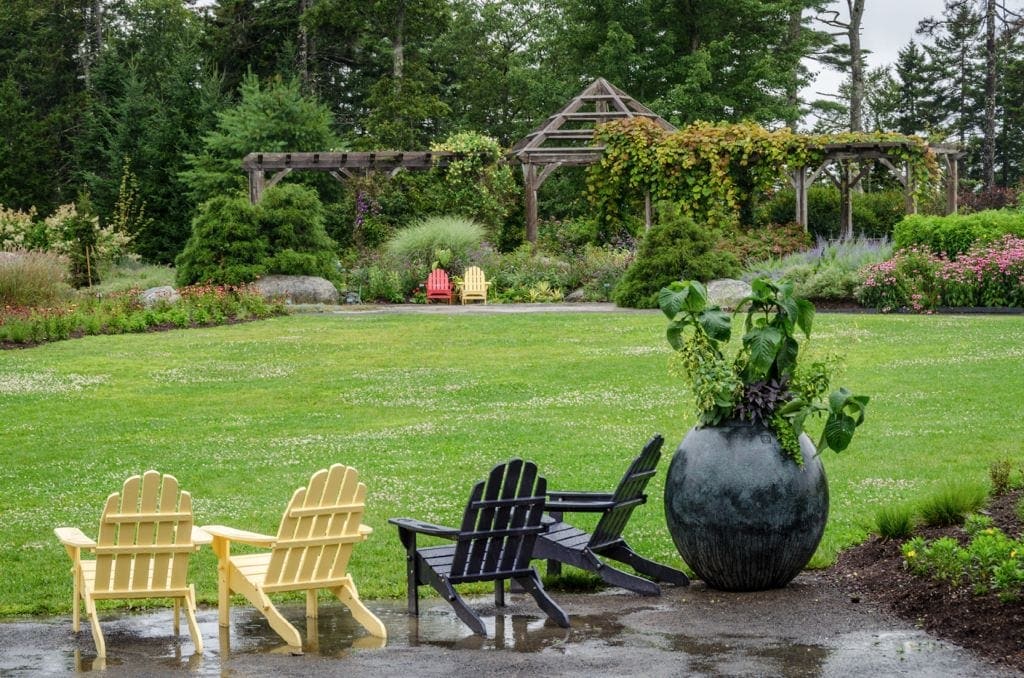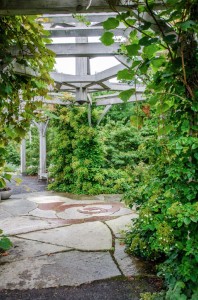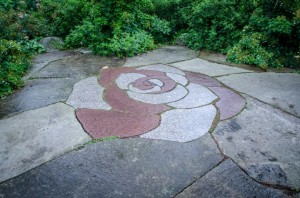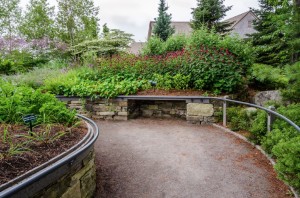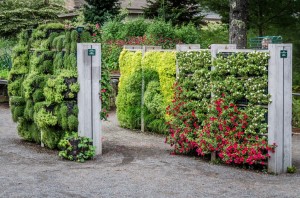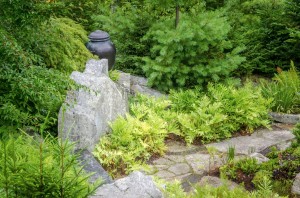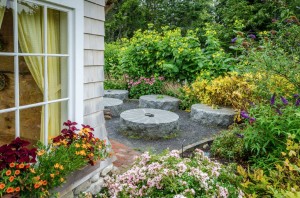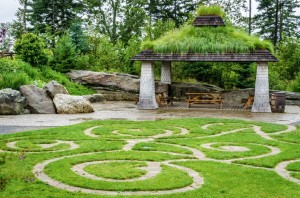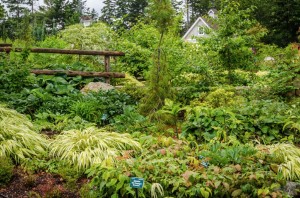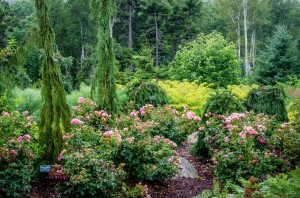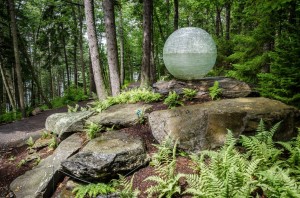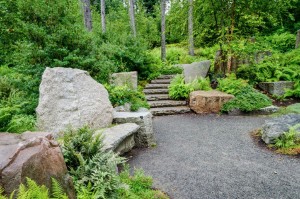The Coastal Maine Botanical Gardens
A Happy Day at the Gardens
'Still in their embryonic phase, but growing quickly': this was the brief and somewhat insipid description for the Coastal Maine Botanical Gardens in an admittedly out-of-date Maine guidebook. Another guidebook, of a similar vintage and specific to the coastal region, did not even deign to mention them at all.
But, despite this less-than-stellar build-up, I was very hopeful that these public gardens would prove worth exploring. I was well aware that Bill Cullina had been lured away from the venerable 'Garden in the Woods' in Massachusetts to become the Director of Horticulture, and more recently the Executive Director, for the much younger Coastal Maine Botanical Gardens.
Back in 2002 I had the happy experience of having Bill teach part of a workshop for wannabee garden writers that I was attending at Garden in the Woods. I am also the proud owner of several of his beautiful books on native plants (wildflowers; trees and shrubs; grasses and mosses). So I was well acquainted with his horticultural prowess.
The official website for the Maine Botanical Gardens was also encouraging, with plenty of detail about the history and the current design of the Gardens, including an interactive map where I could take a virtual walkabout before our visit.
So, based on this information, we focused our short July vacation on the Boothbay peninsula, one of the many tentacles of land that comprise the Maine coast. We deliberately avoided the madding crowds of Boothbay Harbor itself, choosing to spent three nights at the delightful Inn of the Five Gables, in the quiet village of East Boothbay. Our hosts, Susan and Steve, pointed out area hikes in the local woods, a chance to experience 'wild Maine', and even lent us their guidebook.
We also planned on a full day to visit The Gardens, should that turn out to be warranted. And we were delighted that we did.
Together with Dick and my brother Patrick from England, I spent an entire luxurious misty day, strolling around and quietly absorbing the various sights and sounds these lovely public gardens had to offer.
Gardens within 'The Gardens'
The first thing you need to know, as you plan your visit, is that Maine Botanical Gardens, which only officially opened to the public in 2007, are already quite large, comprising some 20 acres of cultivated garden space within a 250 acre site. Indeed, helpful shuttle buses are provided to take visitors with mobility issues to and from the more far-flung corners. So you can easily spend a full day there.
Also, as one might expect, the whole is comprised of a number of distinct parts, each with its individual design, personality and plantings.
Here, in words and pictures, are some of the unique 'gardens within The Gardens' that we explored over the course of our day, plus three lessons learnt for our more modest creations back home.
I hope they will whet your appetite for your own visit the next time you plan a trip to down-east Maine.
The Visitor's Center and the Great Lawn
Naturally enough we started our day at the Visitor's Center. The patio that encircles this airy building offers a perfect view across the Great Lawn, which is surely at the heart of The Gardens. Indeed enough flower-filled beds completely surround the patio and lawn that I imagine some casual visitors may not venture much further.
And looking out across the lawn, everyone was captivated by a hypnotizing abstract sculpture that, ever so slowly, would twist and turn in the breeze.
Also, readily visible across the roughly circular lawn, we could see the imposing rose arbor surrounded by yet more flower beds that created a tapestry of color.
Be sure to make your way inside arbor to see the beautiful stonework, especially the rose and blue stone floor which makes a beautiful picture in of itself.
The Sensory Garden
The Lerner Garden of the Five Senses is both large and completely engrossing.
Its free-form design encourages one to just let go and wander throughout the entire space, all the while slowly absorbing the many different stimuli created to appeal to each of our senses including:
- colors to see;
- water to hear;
- stones to touch;
- leaves to smell;
- herbs to taste.
This complex garden space incorporates several ponds at different elevations with interconnecting waterfalls (sound); walkways and paths; and sitting corners with flowers (color) aplenty.
However, since I lead a Master Gardener project for the residents of our local nursing home, I chose to spend much of my time exploring the truly innovative beds, some of which you can see on the right, designed specifically for people with disabilities.
And, for people with visual impairment, the whole garden could be experienced via the other four senses; sound and smell, taste and touch.
And finally I was fascinated with the clever but simple design of these vertical beds. The basic building blocks were simple wire cages, each two feet wide and about a foot deep and tall---large enough maintain the moisture in the soil for a reasonable time. Each cage was planted with flowers and herbs at touchable heights. What a boon for gardeners who are either space-challenged or wheelchair bound.
Green and Serene
The Haney Hillside Garden pays homage to the diversity of New England's native plants.
And, taken together, the many varied textures in this garden create a lush and beautiful green tapestry, and a fascinating contrast to the colorful beds we had enjoyed so far.
A wide serpentine path, like a gently-flowing grey river edged in green, meanders slowly down the steep hillside, from the area behind the rose arbor to the sea below.
On either side of the path a scattering of small streams and rocky pools reflect the sky and the trees.
A while back this entire wooded hillside was devastated by high winds which removed many trees, leaving a relatively open space. But some 'snags' have been left standing as a visible reminder of the majesty of nature.
Follow this path all the way down to the bottom and turn left; in a short distance you will find the Vayo Meditation Garden'.
Here you can literally lose yourself as you contemplate the beautiful stone sculptures and, not far below between the trees, glimpses of the shining sea.
The Children's Garden
The Bibby and Harold Alfond Children's Garden is a fun and imaginative space which, at the time of our visit, was being enjoyed by children of all ages, including ourselves.
We were especially taken with the duo of whimsical child-sized barns inside the picket fence.
One boasted a shaggy grass roof and millstone seats where classes were scheduled to be held that afternoon.
Not far away two chatty chickens with their handsome rooster scratched together in the dirt.
There was also an playful labyrinth cut into in the lawn, as well as plenty of flowers and vegetables in child-height raised beds.
All in all, the Children's Garden was a magical place to foster a lifetime love of gardens in anyone.
Transcending zone: Distilling the experience
All gardeners love to visit great gardens. We immerse ourselves in the scene, imagine the life that was lived by the gardener, or perhaps by the gilded occupants of an enormous mansion, and come home with beautiful memories.
But given the vast scale of many gardens that are open for visitors, not to mention oftentimes entirely climate different zone and resulting plant palette, it can be hard to distill our experiences into ideas we can actually apply back home.
As I visit great gardens, whether near or far, contemporary or historic, beyond basking in beauty before me, I am also looking for universal ideas that, as normal mortals, we can apply in our own pint-sized gardens.
Here are my big three take-aways from our day on the Boothbay peninsula that we can apply to our personal spaces back home:
Young but not sparse
Like many of our own gardens, these Maine Gardens are relatively young, which means that the shrubs and newly planted trees still have plenty growing to do.
But these gardens were anything but sparse. Far from it---here were spaces filled to the brim with beautiful perennials and colorful annuals. But, growing in the wings, one could spot plenty of small shrubs that, in a decade or so, would begin to dominate the area.
This is something that works on a home scale as well. Initially plant perennials and annuals between your young shrubs. As the shrubs fill out, you can always move, divide or even give away any excess perennials. Think of it as the long-term rhythm of gardening.
Living tapestries
Of course you would expect any botanical garden worth its salt to offer gorgeous flowers in great color combinations, and we were not let down.
But, long after we left, what stayed with me far more than the individual plants, was the interweaving patterns of color and texture the plants created.
The designers here have certainly used large drifts of a single type of flower, favored by past luminaries such as Gertrude Jekyll.
There were also plenty of examples of a matrix style of planting, with an emphasis on grasses, advocated by Piet Oudolf and other contemporary designers. In this style different plant types are intermingled together to create a cohesive whole when seen en-masse.
Both approaches to planting design have their place, even in a small garden.
And both require forethought to implement. Sometimes it takes a bit of willpower to resist planting bits of this and bits of that. But, as you plop your plants in the ground this fall (or next spring), try to imagine the effect they will create as seen from afar.
Annuals involve somewhat more work than perennials, but they do bring a stunning season-long color statement as you can see here. At home, it makes sense to save them for that special spot where you will truly get to appreciate them---perhaps closer to the front door or in front of the kitchen window.
Dynamic flowing spaces
I am always drawn to gardens with a smooth flowing spatial design. Beyond looking serene and peaceful, something every gardener wants, a flowing design actually brings a sense of movement and dynamism to the entire garden.
A strong spatial design also draws your eye to key features of the garden, and directs your way as you explore its many parts.
And, I have to tell you, we were completely bowled over with the exquisite spatial design of the Maine Botanical Gardens.
Each individual garden is beautifully laid out, so that you can effortlessly move about within the space, as here in the Meditation Garden.
But, equally important, the flow also continues between the garden spaces. For instance, when you are in The Garden of the Five Senses, the careful positioning of paths leads you effortlessly to the rose arbor. No need to keep consulting the map.
And finally, each individual garden space had its own distinct personality, look and feel, from the exuberant colorful borders around the Great Lawn, to the cool tranquil green of the Hillside Garden, making it absorbing to walk the different spaces.
But this flowing design aesthetic need not be confined to large and imposing gardens. Rather, it's something that every gardener, whatever the size of their space, can create at home. So, whether your garden is as small as a postage stamp or a sprawling multi-acre extravaganza, take a step back and consider how it all flows together. Do the individual spaces can capture your eye and hold you still for a minute or two, or perhaps even a whole hour? Are they smooth and connected? Is there a reason to go further and find out 'what is around the next corner'?
